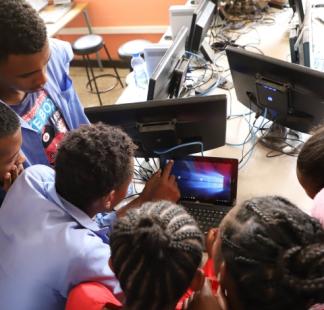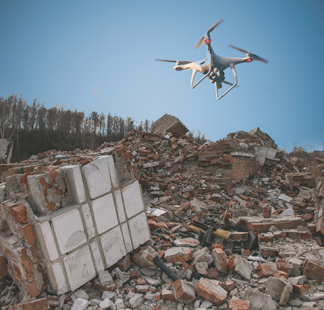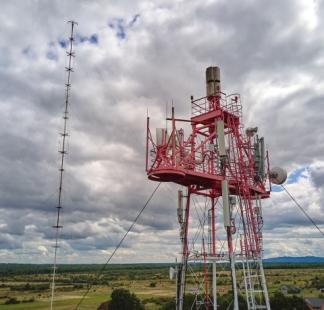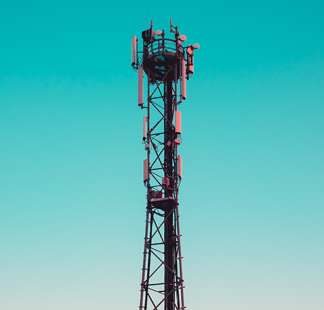- Jonathan Mwakijele
- Annitah Rodah Natwati
- Gustavo Fonseca Ribeiro
Advanced
- Bank transfer
- Credit card
- M-pesa
Description
This training covers the entire radio spectrum ecosystem, with a focus on the use of the high frequency (HF) band. It also introduces international best practices in radio communication. By completing it, learners will gain the skills to plan spectrum use and assign frequencies effectively within their organizations. They will learn how to ensure interference-free communication in the field and how to use allocated spectrum in a sustainable and efficient way that benefits all stakeholders.
The course also trains learners to submit frequency notifications to the International Telecommunication Union Radiocommunication Bureau (ITU-R) through its electronic notification system. In addition, participants will learn how to achieve reliable and interference-free communication using both high frequency (HF) and very high frequency (VHF) systems in a rational and sustainable manner.This training course focuses on the whole radio spectrum ecosystem in general and HF Band use in particular and on the best international practices as far as radio communication is concerned.
TThis course is designed for officers who work with very high frequency (VHF) and high frequency (HF) systems. It is relevant to professionals in maritime, aeronautical, meteorological, scientific research, amateur radio, and related fields.
The target audience includes staff from airport avionics operations, civil aviation authorities, and maritime communication offices at ports. It also includes meteorological engineers, amateur radio operators, and researchers who use HF systems. In addition, the course is suitable for staff of non-governmental and humanitarian organizations such as the United Nations High Commissioner for Refugees (UNHCR), the United States Agency for International Development (USAID), the United Nations Children’s Fund (UNICEF), the Red Cross, the Red Crescent, Médecins Sans Frontières (MSF), World Vision, and security agencies.
TTo join this course, participants should already be familiar with very high frequency (VHF) and high frequency (HF) radio systems and their operation.o participate in this program delegates should be familiar with VHF/HF Radio Systems and their usage in the field.
Upon completion of this course, learners will be able to:
- Undertake Spectrum Management and Frequency Assignment Tasks
- Use ITU-R Radio Regulations in operation of VHF/HF and Radar Systems
- Conduct Spectrum allocation for VHF and HF systems
- Avoid causing harmful interference
- Analyze interference and prevent its occurrence through careful plans
- implement regulatory requirements for using HF Systems
- Conduct international frequency coordination with the Bureau
- Implement spectrum efficiency best practices
- Comply with national and international Radio Regulations
The method that shall be used includes but is not limited to lectures using PowerPoint presentations, group discussions, group project assignments, discussion forums, quizzes, case studies from different regions on subject matter, simulations as well as presentations from learners.
Quizzes (4) 40
Discussion forums (4) 20
End of course assignment (1) 40
A total score of 70% or higher is required to obtain the ITU certificate.
Week 1 HF Systems:
- Introduction to Radio Spectrum and Spectrum Management:
The Roles of ITU and ITU- R Radio Regulations, Frequency Allocation for HF systems, spectrum sharing, Interference and interference management, Regulatory requirements for radio transmitters, international coordination and recording of assignments in MIFR
- HF Systems: broadcasting, aeronautical, meteorological, and Disaster relief,
- Oceanographic radar systems, Frequency adaptive HF
- GMDSS, Global communication systems
- Future trends in HF communication
Learning Outcomes
- Learners will study spectrum management functions and importance of efficient spectrum use without causing interference based on ITU-R Regulations. (Red Book)
- Learners will understand how HF frequencies are allocated and how they are shared by transmitters without causing harmful interference
- Learners will understand the need to comply with regulations from ITU-R and NRAs in respective countries
- Learners will familiarize with HF Systems for broadcasting, Aeronautical, meteorological and maritime communications
Activities
Exercise on E-submission to the bureau for HF stations for inclusion in the MIFR using BR-Terrestrial Software from ITU
Discussion forum 1
Quiz 1: Friday
Week 2 Science Services:
- Introduction to Science Services
- Radio Astronomy Service
- Earth Exploration Satellite Service (EESS)
- The Met Aids and Meteorological Satellite Services
- Space Research Service (SRS)
- Space Operations Service
- Standard Time and Frequency (STF) Service and STF- Satellite Service
Learning Outcomes
Learners will be in a position to effectively conduct scientific research using satellite systems for meteorology, space research, space operations and STF synchronization services
Activities
Exercises on E-Submission and coordination of Space satellite with BR-Space Software from ITU-R
Discussion forum 2
Quiz 2: Friday
Week 3 Maritime Services:
- Maritime Communication Services and Systems
- The Global Maritime Distress and Safety System (GMDSS)
- Maritime Regulatory Action
- Special services and Systems
- National Frequency assignments and Coordination for maritime stations
- Role of the IMO and National Safety Agencies in the Maritime Mobile Service
- Future Trends in Maritime Communications
Learning Outcomes
Learners will be able to use GMDSS systems to effectively communicate. They will equally be able to conduct national frequency assignments and coordination with the bureau. Learners will understand the roles of IMO and national safety agencies in MMS.
Activities
Exercises with GMDSS Simulator.
Exercises on BRIFIC-Space Software (ITU-R)
Discussion forum 3
Quiz 3: Friday
Week 4 Amateur Services:
- Introduction to amateur services
- Amateur Radio Spectrum Management
- Licensing
- Communication techniques
- Amateur Radio as a Tool to Develop Human Resources
- Interference and safety
- The Future of Amateur communication
Learning Outcomes
Learners will be able to use amateur radio systems for effective communication. They will know that licensing is mandatory for Amateur ratio use. They will use the radio interference free and safely.
Activities
Discussion forum 4
Quiz 4: Friday
End of course assignment submission: Friday












